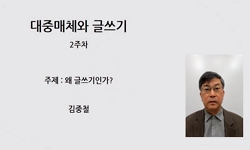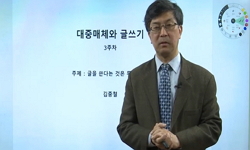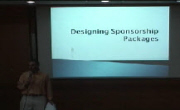In consideration of limitations of the classic economic approach to risk evaluation and the psychometric analysis of risk perception, this study applies a facilitated modeling technique to a group of college students in Korea. In this group activities...
http://chineseinput.net/에서 pinyin(병음)방식으로 중국어를 변환할 수 있습니다.
변환된 중국어를 복사하여 사용하시면 됩니다.
- 中文 을 입력하시려면 zhongwen을 입력하시고 space를누르시면됩니다.
- 北京 을 입력하시려면 beijing을 입력하시고 space를 누르시면 됩니다.

대중매체의 영향과 위험인식 특성: 현대사회 기술위험에 대한 집단인지모델기법 적용 = A Study on Mass Media and Risk Perception: Application of Facilitated Group Modeling to Social Risks
한글로보기https://www.riss.kr/link?id=A105397666
-
저자
정익재 (서울과학기술대학교) ; Chung, Ik Jae

- 발행기관
- 학술지명
- 권호사항
-
발행연도
2018
-
작성언어
Korean
- 주제어
-
등재정보
KCI등재
-
자료형태
학술저널
- 발행기관 URL
-
수록면
124-131(8쪽)
-
KCI 피인용횟수
3
- DOI식별코드
- 제공처
-
0
상세조회 -
0
다운로드
부가정보
다국어 초록 (Multilingual Abstract)
In consideration of limitations of the classic economic approach to risk evaluation and the psychometric analysis of risk perception, this study applies a facilitated modeling technique to a group of college students in Korea. In this group activities, researchers did not provide a pre-selected list of risk items. Instead, 35 participants had group discussions to generate 63 risk items, to rate their risk level and to evaluate their characteristics in terms of the level of knowledge and dreadfulness. This study also analyzes the influence of mass media, online news papers in particular, on risk perception by counting the number of news articles covering key word corresponding risk items generated. The results show that there are significant differences between the rank order of risk items generated by students and that of statistical or objective risk. Psychometric analyses find that the levels of knowledge and dreadfulness have meaningful correlations with risk level. A well known or a dreadful risk demonstrates a high level of risk. Correlation analyses of media coverage and the risk level also re-confirms strong positive relations. The larger number of news articles a risk issue was covered by, the higher level of risk it showed. It means that college students generated risk items on the basis of what they were exposed by media. The role of mass media in risk perception and the importance of risk communication in risk evaluation are underlined. Implications of research findings and future research are discussed as well.
참고문헌 (Reference)
1 정익재, "한국인의 위험인지에 대한 경험적 분석" 한국안전학회 22 (22): 91-97, 2007
2 정익재, "위험지각 분석과 위험인지도 도출: 진행자에 의한 인지모델기법의 적용" 한국심리학회 35 (35): 481-503, 2016
3 정익재, "위험인식의 특성과 의미: 한국인의 기술위험 인지도에 대한 Psychometric 분석" 한국안전학회 29 (29): 80-85, 2014
4 정익재, "네트워크 환경에서 과학기술위험에 대한 위험커뮤니케이션 특성과 일반인의 위험인식 및 대응행동의 상호작용 분석 - 후쿠시마 원전사고 중심으로 -" 한국정책학회 27 (27): 281-303, 2018
5 L. Phillips, "Transparent prioritisation, budgeting and resource allocation with multi-criteria decision analysis and decision conferencing" 154 : 51-68, 2007
6 B. B. Johnson, "The social and cultural construction of risk" D. Reidel Publishing Company 1987
7 R. Kasperson, "The social amplification and attenuation of risk" 545 : 95-105, 1996
8 B. Miles, "The role of news media in natural disaster risk and recovery" 63 : 365-373, 2007
9 L. J. Frewer, "The media and genetically modified foods" 22 (22): 701-711, 2002
10 C. Eden, "Tackling strategic problems: The role of group decision support" Sage Publications 1990
1 정익재, "한국인의 위험인지에 대한 경험적 분석" 한국안전학회 22 (22): 91-97, 2007
2 정익재, "위험지각 분석과 위험인지도 도출: 진행자에 의한 인지모델기법의 적용" 한국심리학회 35 (35): 481-503, 2016
3 정익재, "위험인식의 특성과 의미: 한국인의 기술위험 인지도에 대한 Psychometric 분석" 한국안전학회 29 (29): 80-85, 2014
4 정익재, "네트워크 환경에서 과학기술위험에 대한 위험커뮤니케이션 특성과 일반인의 위험인식 및 대응행동의 상호작용 분석 - 후쿠시마 원전사고 중심으로 -" 한국정책학회 27 (27): 281-303, 2018
5 L. Phillips, "Transparent prioritisation, budgeting and resource allocation with multi-criteria decision analysis and decision conferencing" 154 : 51-68, 2007
6 B. B. Johnson, "The social and cultural construction of risk" D. Reidel Publishing Company 1987
7 R. Kasperson, "The social amplification and attenuation of risk" 545 : 95-105, 1996
8 B. Miles, "The role of news media in natural disaster risk and recovery" 63 : 365-373, 2007
9 L. J. Frewer, "The media and genetically modified foods" 22 (22): 701-711, 2002
10 C. Eden, "Tackling strategic problems: The role of group decision support" Sage Publications 1990
11 C. Starr, "Social benefit versus technological risk" 165 : 1232-1238, 1969
12 S. Krimsky, "Social Theories of Risk" Praeger 1992
13 I. J. Chung, "Social Amplification of Risk in the Internet" 31 (31): 1883-1896, 2011
14 Y. H. Lee, "SNS usage and issue analysis" 3 : 56-78, 2014
15 J. Flynn, "Risk, Media and Stigma" Earthscan 2001
16 M. Morgan, "Risk communication: A mental models approach" Cambridge University Press 2002
17 M. Douglas, "Risk and culture" University of California Press 1982
18 S. H. Lee, "Risk and Risk Management in Modern Society: Discussion on the Social Construction of Risk" 29 : 61-88, 2009
19 P. Slovic, "Perception of risk" 236 : 280-285, 1987
20 "Korean Statistical Information Service provided by Statistics Korea"
21 C. H. Park, "Knowledge impact on public acceptance of nuclear power generation" 53 (53): 117-150, 2015
22 A. Tversky, "Judgement under uncertainty: heuristics and biases" 185 : 1124-1131, 1974
23 C. M. Bahk, "Impact of movie depictions of volcanic disaster on risk perception and judgment" 18 (18): 63-84, 2000
24 P. Vasterman, "From media hype to twitter storm: News explosions and their impact on issues, crises and public opinion" Amsterdam University Press 2018
25 L. Franco, "Facilitated modelling in operational research" 205 : 489-500, 2010
26 O. Damman, "Educating health consumers about cardio-metabolic health risk" 89 (89): 300-308, 2012
27 L. Phillips, "Decision conferencing" 2006
28 O. Renn, "Coping with complexity, uncertainty, and ambiguity in risk governance: A synthesis" 40 (40): 231-246, 2011
29 S. Ahn, "Analysis of adjectives about risk and structure risk meaning" 17 (17): 203-222, 2005
30 Y. Kim, "A study of Korean risk perception and its policy implications" 29 (29): 935-954, 1995
동일학술지(권/호) 다른 논문
-
고속철도 횡단 강거더 설치공사에서의BIM 기반 가상건설 장비운영 시뮬레이션의 적용
- 한국안전학회
- 박준원
- 2018
- KCI등재
-
- 한국안전학회
- 최정열
- 2018
- KCI등재
-
궤도 및 교량 안전성을 고려한 열차 증속가능 속도대역 평가
- 한국안전학회
- 방은영
- 2018
- KCI등재
-
- 한국안전학회
- 박상현
- 2018
- KCI등재
분석정보
인용정보 인용지수 설명보기
학술지 이력
| 연월일 | 이력구분 | 이력상세 | 등재구분 |
|---|---|---|---|
| 2027 | 평가예정 | 재인증평가 신청대상 (재인증) | |
| 2021-01-01 | 평가 | 등재학술지 유지 (재인증) |  |
| 2018-01-01 | 평가 | 등재학술지 유지 (등재유지) |  |
| 2015-01-01 | 평가 | 등재학술지 유지 (등재유지) |  |
| 2011-01-01 | 평가 | 등재학술지 유지 (등재유지) |  |
| 2009-01-01 | 평가 | 등재학술지 유지 (등재유지) |  |
| 2007-01-01 | 평가 | 등재학술지 유지 (등재유지) |  |
| 2005-10-26 | 학술지명변경 | 한글명 : 산업안전학회지 -> 한국안전학회지 |  |
| 2005-02-28 | 학회명변경 | 한글명 : 한국산업안전학회 -> 한국안전학회영문명 : The Korean Institute Of Industrial Safety -> The Korean Society of Safety |  |
| 2004-01-01 | 평가 | 등재학술지 선정 (등재후보2차) |  |
| 2003-01-01 | 평가 | 등재후보 1차 PASS (등재후보1차) |  |
| 2001-07-01 | 평가 | 등재후보학술지 선정 (신규평가) |  |
학술지 인용정보
| 기준연도 | WOS-KCI 통합IF(2년) | KCIF(2년) | KCIF(3년) |
|---|---|---|---|
| 2016 | 0.3 | 0.3 | 0.31 |
| KCIF(4년) | KCIF(5년) | 중심성지수(3년) | 즉시성지수 |
| 0.28 | 0.27 | 0.519 | 0.12 |




 ScienceON
ScienceON






